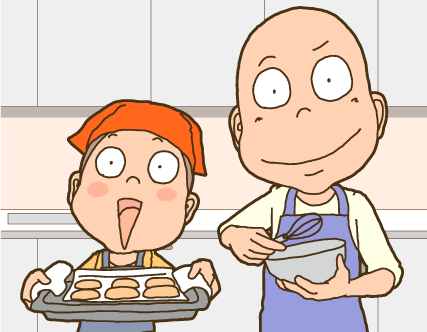Table of Contents
- Parenting Cartoon “Thank Mom with Valentine’s Day Chocolate”
- Fill your belly and your heart! Enjoy baking with Dad!
Parenting Cartoon “Thank Mom with Valentine’s Day Chocolate”

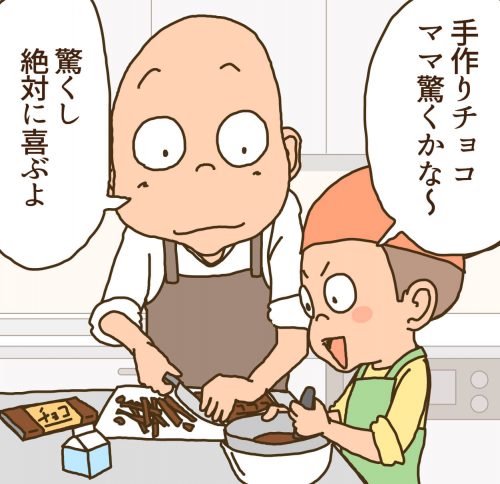
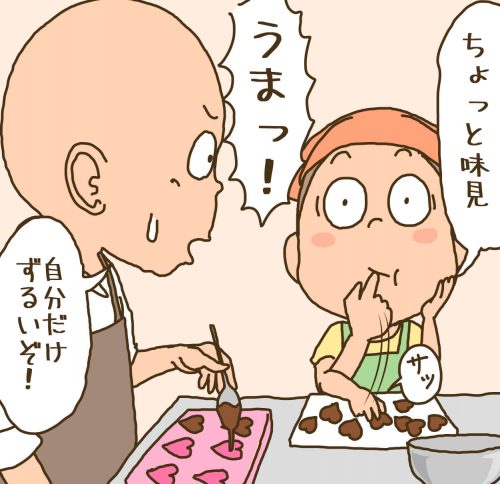
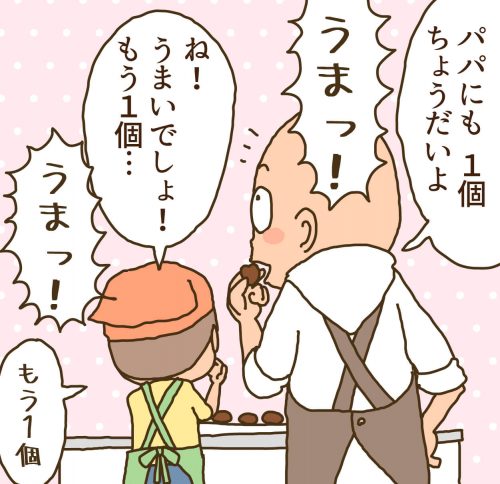
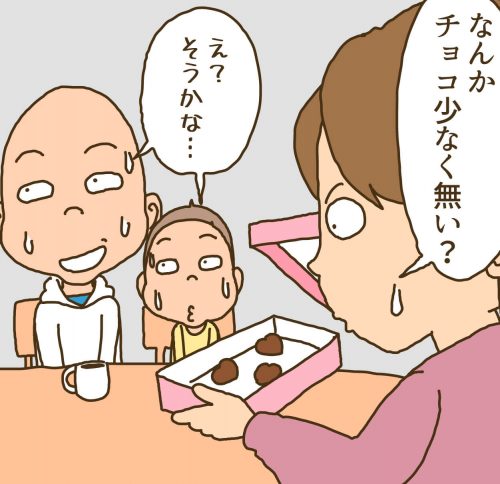

Profile
A1
After working for a design company in Tokyo, he became a freelance illustrator. He is a hard-working father who produces animation, manga, and illustrations, including winning the Yubari International Fantastic Film Festival’s International Short Film Showcase Division Excellence in Animation Award.
Fill your belly and your heart! Enjoy baking with Dad!
Kids love sweets.
It will taste even better if you and your child enjoy making it by hand!
But when it comes to cooking, but when it comes to baking.
Many fathers find it quite a hurdle.
So this time,
Tips and tricks for baking sweets and working with parents and children,
Here are some recipes for sweets that are easy to make, even for inexperienced bakers!
Tips for parents and children to enjoy baking sweets together
We asked Ms. Misa Matsumoto, who has been running a baking class and teaching baking to parents and children for over 15 years, about the benefits of baking with parents and children, as well as tips and cautions for baking with children aged about 3 to 6.
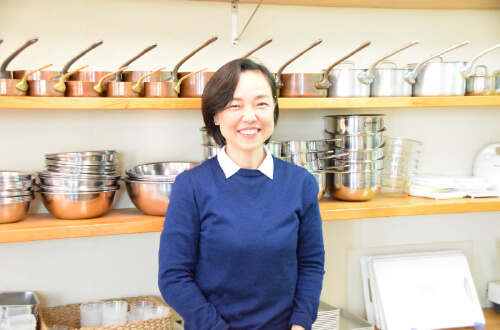
Parents and children can make discoveries from the same perspective.
Parents are more knowledgeable and experienced in cooking than their children, since cooking is often done by parents, but baking may be new to both parents and children in some families. The good news is that this allows parents and children to discover and learn new things from the same perspective.
By making sweets that we usually buy at the supermarket with our own hands, we can ask ourselves “What is this candy made of? How is it made? This is an opportunity for parents and children to think together. Children who are very curious will be delighted because they will be able to look at things they normally don’t think about.

Watch your child take on the challenge!
When parents and children are baking together, parents tend to say, “This is the way to do it,” or “This is the way to do it,” or “This is the way to do it. Many people are concerned about whether or not their children will make mistakes or make a mess around them, but children do not like to be interrupted, so first affirm what the child does.
Parents should value the opportunity to challenge their children by doing it first and setting a good example, or by letting the child experience it first and then giving advice afterwards.
As your child becomes accustomed to baking, remind him or her to keep the surroundings clean and ready to bake.
Tell them not to leave materials splattered on the table or utensils used, but to wipe up any messes and put away any items not in use.
It would be nice if, in the process of making sweets, they could also develop the habit of tidying up their surroundings.

Safe and enjoyable baking!
In baking, fire and knives are sometimes used, so please be careful to ensure safety.
When using a fire, make sure there are no flammable items around and tell them to stay away from areas that get hot.
When using a stainless steel stand, be careful that children do not touch it because the heat will remain when you place a warm item on it.
Establish rules for the use of knives and other dangerous cooking utensils.
For example, tell your child that when you put down the knife, the blade should face the back of the knife, not toward you, and that when you are finished using the knife, you should wash it and put it away instead of leaving it in the sink.

Try your hand at making Valentine’s Day candy!
Next, as a practical guide, we will introduce a recipe for sweets that can be easily made by dads who have no experience in baking!
Cereal Chocolate Bar
This chocolate candy with granola is very easy to make without using fire. You can use any kind of chocolate, sweet, milk, white, etc.! Enjoy making your own original chocolate bar by adding your own twist to the filling.
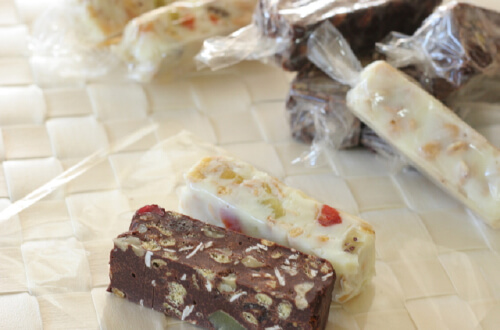
Chocolate – 120g
Fresh cream – 60g
Granola – 30g
Nuts – 30g
Dried fruit – 30g
*Aim for a total of about 100 grams of granola, nuts, dried fruits, etc. to be included in the product.
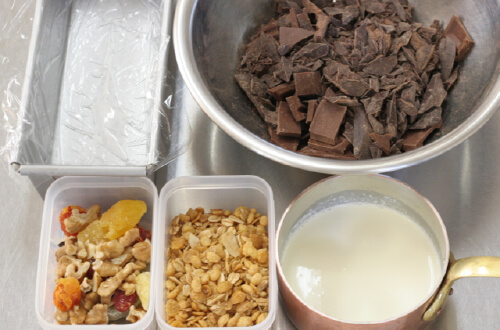
How to make…
- Chop the chocolate into small pieces and cut nuts and dried fruits into appropriate sizes.
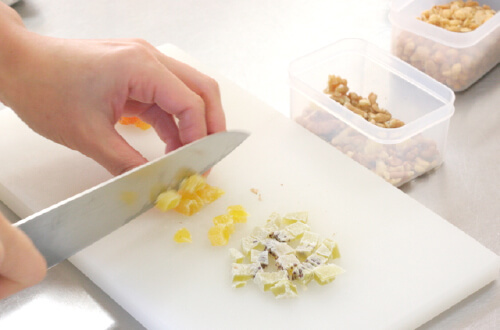
- Prepare a container by lining it with plastic wrap.
*We use pound cake molds here, but you can use plastic food containers, square plates, milk cartons, or anything else you have at home.
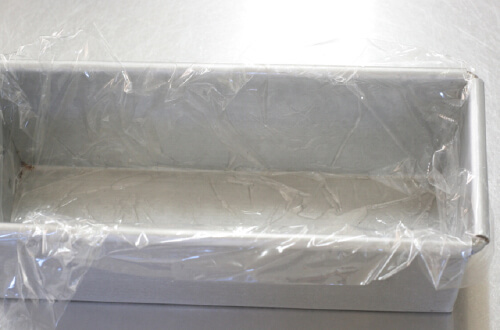
- In a small saucepan, heat the cream. Bring to a light boil.
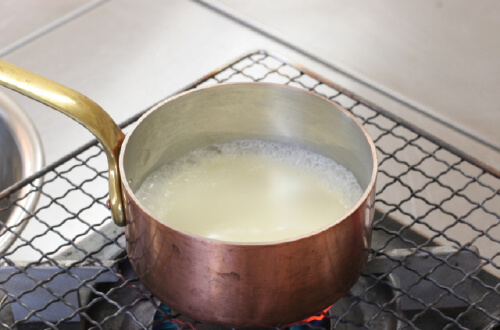
Slow and careful mixing is where children excel. Have your child mix it for you.
- Place the chocolate in a bowl, add the boiling cream and carefully stir with a wooden spoon to melt.
- If the chocolate is not fully melted, place the entire bowl over a distant fire and stir carefully until the chocolate is completely melted.
*Use heat-resistant bowls.
*Be careful not to heat too strongly or too close together, or the chocolate will become too hot and the crystals will break up and stop hardening. Warm the chocolate by slowly and gradually raising the temperature.

- Add granola, nuts, and dried fruit and mix briefly.
- Pour the mixture into the prepared molds and flatten the surface lightly.
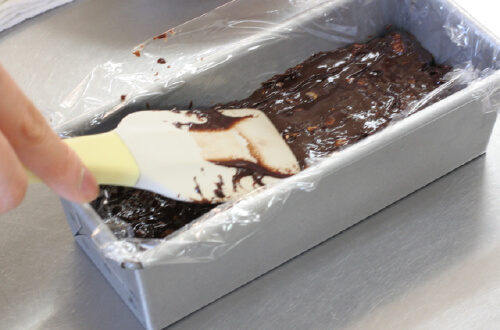
- Let stand at room temperature until cool, then refrigerate to harden.
- When firm, peel off the plastic wrap and cut into appropriate sizes.
- Wrap it in cellophane and you’re done.
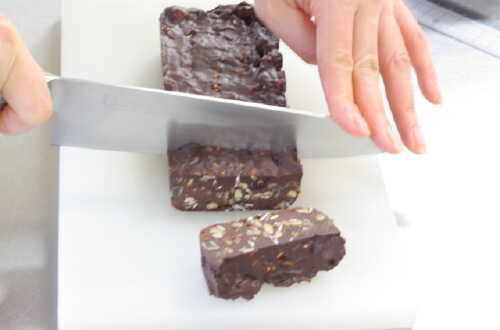
Can you do a caramel wrapper with cellophane? Please teach your child how to twist and stop.
Making confectioneries requires preparation, such as gathering ingredients and utensils that are not used in everyday cooking. You may feel that this is a hurdle to overcome, but even 100-yen stores now sell a certain amount of utensils.
This chocolate bar can be done with just a bowl and a rubber spatula, so start with something simple like this and let your child experience the fun.

Making sweets allows us to make new discoveries from the same perspective as our children and to feel their growth.
Why not try making one to enhance your regular snack time?
Be careful not to overeat, however!




